
“The Jungle Book was released exactly thirty years after the debut of Disney’s first animated feature, Snow White and the Seven Dwarfs. In the ensuing years, the Disney staff had conquered the field of animation so thoroughly that there seemed nowhere else to go. The challenge facing the production team, which had worked together on so many films, was how not to go stale or simply tread water. And now they would have to confront that challenge without their leader.”
This quote from Leonard Maltin’s book, The Disney Films, perfectly sums up all that was riding on The Jungle Book when it came to theaters fifty-five years ago.
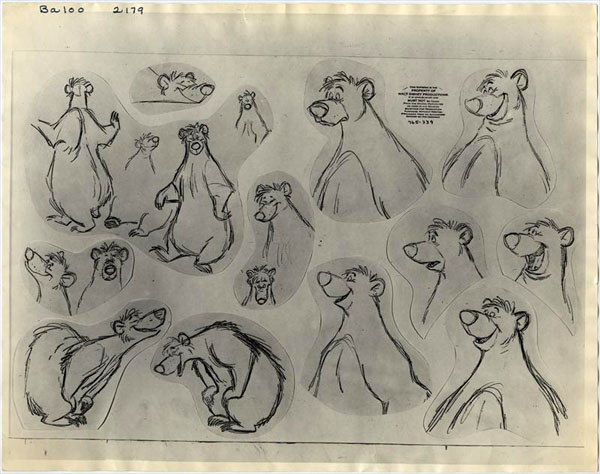
Released a little less than a year after the death of Walt Disney in December of 1966, the animated feature would be the last to bear his personal stamp. It would also be the film that so many would be watching closely, as it would be the first animated feature made without the complete guidance of the man who helped create the blueprint for it.
Walt Disney obtained the rights to author Rudyard Kipling’s The Jungle Book in 1963. Legendary story man Bill Peet worked on The Jungle Book and recalled, in his book, Bill Peet An Autobiography: “When I had six or seven boards worked out, I presented that first phase of the story to Walt and the guys. Everyone was excited about the animation possibilities, and Walt was so pleased he came over to shake my hand. He also liked my idea for the song ‘Bear Necessities,’ something for Baloo the bear to sing – so I was off and running.”
Peet wanted to bring the darker tone of Kipling’s book to the screen, which Walt wasn’t happy with, so he turned the script over to another legend of the studio’s story department, Larry Clemmons. According to Clemmons, Walt said, “Here is the original by Rudyard Kipling. The first thing I want you to do is not to read it.”
The Jungle Book transitioned to a simpler, character-driven story. The film became the tale of “man cub” Mowgli, abandoned in the jungle, and Bagheera, the panther who is charged with getting the young boy back to the man village. Along the way, Mowgli meets Baloo the bear, King Louie the orangutan, Colonel Hathi the elephant, Kaa the snake, and the villain, Shere Khan, the tiger.
With this storyline, there were changes to the cast in the film during production, most notably, a Rhinoceros character named Rocky (who was to be voiced by comedian Frank Fontaine, well known at the time for playing “Crazy Guggenheim” on The Jackie Gleason Show), but the character was ultimately cut.
The grim vultures from Kipling’s original book transitioned to caricatures of The Beatles. Baloo, initially just a cameo appearance, also became a more prominent presence in the story as revisions were made, with his song, “The Bear Necessities,” becoming a signature moment for the film and an iconic moment for Disney animation.
The Oscar-nominated song was one of many musical numbers created by Terry Gilkyson, who had also crafted others for the film, which were eventually removed from the film as The Jungle Book went through its various story changes.
Gilkyson’s other songs were replaced by those by legendary Disney collaborators Richard and Robert Sherman. Among The Sherman Brothers’ contributions was “I Wanna Be Like You,” which King Louie sings to Mowgli. For more on the soundtrack, check out Greg Ehrbar’s article from 2018.
 The scat-infused Dixieland number was a showcase for singer Louis Prima, who was the voice of King Louie. The singer was one of many well-known voices in The Jungle Book, including Sebastian Cabot as Bagheera the panther, Phil Harris as Baloo, Sterling Holloway at Kaa the snake, J. Pat O’Malley, as Colonel Hathi, the elephant (and Buzzie, one of the vultures) and George Sanders, as the villainous tiger, Shere Kahn. Bruce Reitherman, son of the film’s director, Wolfgang Reitherman, served as the voice of Mowgli.
The scat-infused Dixieland number was a showcase for singer Louis Prima, who was the voice of King Louie. The singer was one of many well-known voices in The Jungle Book, including Sebastian Cabot as Bagheera the panther, Phil Harris as Baloo, Sterling Holloway at Kaa the snake, J. Pat O’Malley, as Colonel Hathi, the elephant (and Buzzie, one of the vultures) and George Sanders, as the villainous tiger, Shere Kahn. Bruce Reitherman, son of the film’s director, Wolfgang Reitherman, served as the voice of Mowgli.
The voices would inform the characters’ performances – Harris’ carefree attitude carried over to Baloo’s persona, particularly in the hand-slapping, be-bopping dance movements, and Sanders urbane, above-it-all manner resulted in a wonderful moment where Shere Khan casually interrogates Kaa.
It’s one of the many scenes of brilliant character animation in The Jungle Book. Shere Khan’s quiet malevolence, coupled with more realistic feline movements, were brought to the screen by Milt Kahl; the comedic cluelessness of the elephant brigade was by John Lounsbery; and the warm relationship that develops between Baloo and Mowgli from Frank Thomas and Ollie Johnston are all examples of legendary talents and so many of Walt’s Nine Old Men doing what they did best: bringing forth performance and acting, through drawings.
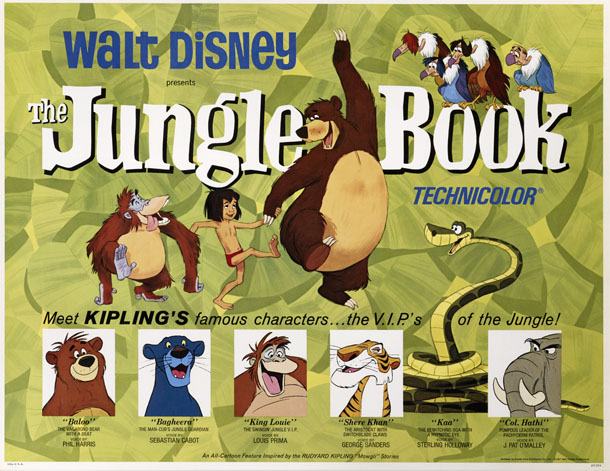
When The Jungle Book was released on October 18th, 1967, it went on to earn over $23.8 million worldwide, which, at the time, made it the most successful animated film during its initial run. The Disney Studio would breathe a sigh of relief, and the audience’s acceptance allowed many to put their concerns aside.
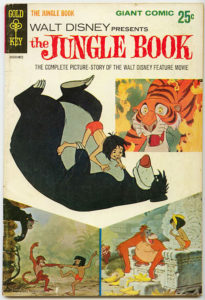 Subsequent theatrical re-issues in 1978, 1984, and 1990, and its debut on home video in 1991, have made The Jungle Book one of the enduring Disney films for multiple generations.
Subsequent theatrical re-issues in 1978, 1984, and 1990, and its debut on home video in 1991, have made The Jungle Book one of the enduring Disney films for multiple generations.
The film’s lasting impact inspired the Disney TV shows Tale Spin and Jungle Cubs in the 90s, as well as a sequel, released in 2003 and a live action/CGI re-make in 2016.
The success of The Jungle Book, coming just after Walt’s passing, signaled what many considered a “last hurrah” at the studio for a period of time, as the 70s and most of the 80s were challenging for Disney, where animated film production was sparse and didn’t live up to past glory. It wasn’t until 1989’s The Little Mermaid that Disney would see a hit of this magnitude again.
Fifty-five years later, The Jungle Book rightfully stands as one of the studio’s masterpieces. As Time magazine said in their review in 1967: “…it is the happiest possible way to remember Walt Disney.”


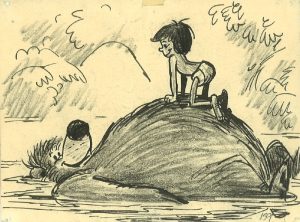
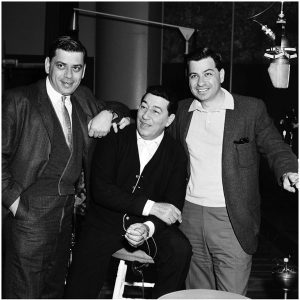
 Michael Lyons is a freelance writer, specializing in film, television, and pop culture. He is the author of the book, Drawn to Greatness: Disney’s Animation Renaissance, which chronicles the amazing growth at the Disney animation studio in the 1990s. In addition to Animation Scoop and Cartoon Research, he has contributed to Remind Magazine, Cinefantastique, Animation World Network and Disney Magazine. He also writes a blog, Screen Saver: A Retro Review of TV Shows and Movies of Yesteryear and his interviews with a number of animation legends have been featured in several volumes of the books, Walt’s People. You can visit Michael’s web site Words From Lyons at:
Michael Lyons is a freelance writer, specializing in film, television, and pop culture. He is the author of the book, Drawn to Greatness: Disney’s Animation Renaissance, which chronicles the amazing growth at the Disney animation studio in the 1990s. In addition to Animation Scoop and Cartoon Research, he has contributed to Remind Magazine, Cinefantastique, Animation World Network and Disney Magazine. He also writes a blog, Screen Saver: A Retro Review of TV Shows and Movies of Yesteryear and his interviews with a number of animation legends have been featured in several volumes of the books, Walt’s People. You can visit Michael’s web site Words From Lyons at: 






















I vividly remember seeing “The Jungle Book” with my family when it first came out in 1967. In short order my parents bought the record album and the book of sheet music. I played “Colonel Hathi’s March” over and over on the piano until my mother begged me to stop. “The Jungle Book” and “Mary Poppins” are the only two Disney features that I know every line of every song by heart — and have, since the age of six!
I never read the original Jungle Book, but I did have Kipling’s JUST SO STORIES; my dad used to read them aloud at bedtime. It’s a shame that Disney never adapted any of them into animated short subjects. The one about the origin of armadillos would have made a great cartoon.
It was a “Jungle Book” world when the film was released! There were promotions on television, special giveaways of Jungle Book merchandise, and toys, a comic book, records, etc. Something Jungle Book was pretty much on every kid’s wish list that Christmas.
My mother bought me a copy of Kipling’s original book, and right away I was startled by the many changes that were wrought by the Disney Studios. The biggest difference in my young mind was the switching of personalities of Baloo and Bagheera. In the book, Baloo is the serious one while Bagheera is playful. A trace of this playfulness is seen in the film at the Council Rock, when Bagheera adopts a teasing attitude toward the wolves, but aside from that he is the one who maintains the purpose and isn’t sidetracked. But of course I wouldn’t have had the film any other way, with the delightful performance of Phil Harris as the happy-go-lucky bear. Also, Kaa in the book is Mowgli’s friend. But as portrayed by Sterling Holloway he makes a great villain.
I remember the program on Walt Disney’s Wonderful World of Color, as it was still known in those early years immediately after Walt’s passing, the Christmas show “From All of Us to All of You” with the Surprise Package as the Jungle Book. It was a delightful way to ease into the holiday season and it helped to make going to see the Jungle Book in the theatre as the big event of that Christmas week.
Also saw that in theatres….the DIsney booi adaption does have Kaa as Mowgli’s friend..
Like the old music hall joke:
Q: Do you like Kipling?
A: I don’t know. I’ve never kippled.
That’s what Walt Disney did with “Jungle Book,” kippled it, but dang it, it worked. It even fueled anticipation for the post-Disney Disney features; those of us of a certain age will remember the fuss over “Aristocats,” “Robin Hood,” and “The Rescuers” on their initial releases. But none of them lived up to “Jungle Book’s” promise.
Now that they grind out the CGI features like sausages, they’ve ceased to be big events.
Seriously, I thought Disney is doing a better job with their current animation feature film then their competiters. Plus, the reason we had two last year was because of a “little thing” called the pandemic.
Good article. Just one question: “So what are we goin’ to do?”
“Now, don’t start that again!”
Say, Michael, I don’t suppose there’s any chance of a 50th anniversary Cel-ebration of “Daffy Duck and Porky Pig Meet the Groovie Goolies”, is there? Seriously, I’d love to know how that came about!
Self-plug time (though you already know about it, Paul): https://buddyscartoons.blogspot.com/p/the-worst-looney-tunes-anything-ever.html
Disney’s “The Jungle Book” was the first film I ever saw in a theater. My parents took me to see it in ’67 when I was 5 years old, and I was completely enthralled. I went around singing “The Bare Necessities” for weeks after seeing that movie. At that time, I also enjoyed the Disney album with songs from the film (not the actual soundtrack) and “other jungle favorites.” And in ’68, I procured the Wonderful World of Disney Gulf Oil magazine featuring “The Jungle Book” on the cover. Fortunately, I was able to buy it on eBay several years ago as my original copy was lost in the mists of time. Great memories!
You didn’t mention the first live action remake they did in 1994 starring Jason Scott Lee.
A respectable hit at the time, but weirdly forgotten, which worked out in Disney’s favour as they were able to remake it again, this time with more nods towards the 66 film. You get the sense they wished the 1996 101 Dalmatians had been equally forgotten, as that would have allowed them to rehash that all over again rather than trying to earn those spotted dollars with the conceptually clunky Cruella prequel/reboot/resomething
You’re not kidding — I had to look it up again just in case I just imagined it existed.
This wasn’t the only Jungle Book. Chuck Jones did his own “corrections” of the Disney version, even using the “correct” pronunciation of Mowgli (moh-glee). Rikki-Tikki-Tavi is a masterpiece that I grew up on because my mom had the VHS of it. Mowgli’s Brother’s is good; The White Seal was boring. I was happy to see Chuck be more personal, and finally NOT use Maurice Noble, who hijacked his final cartoons at WB.
“This is the original by Kipling. The first thing I want you to do, is not read it.”
This is Tale Spin. The first thing I want you to do, is give it a true remastering, and release if on Blu-ray.
There were no vultures in the original book; instead there were kites, which are very common birds in India and often seen scavenging near and in human settlements.
it actually is a bit curious that Kipling did not include or even mention vultures in his book. This is just speculation on my part but it may have had something to do with a rather macabre childhood experience he had in which he found a dead child’s hand in his garden, apparently dropped by a vulture. As it happens there was a Tower of Silence near his home- a place where people left corpses for vultures to eat as part of a religious practice (vultures eat the flesh and free the dead person’s soul that can then ascend unburdened).
Super helpful for scoping out what I want to buy on my next Disney trip! Thank youuuu!!!!